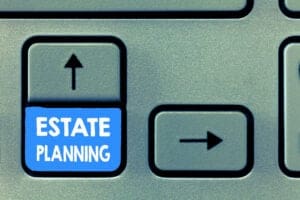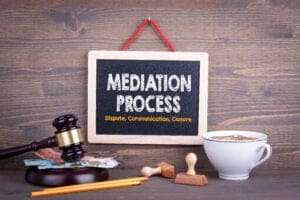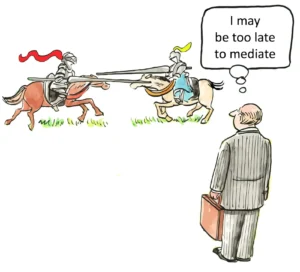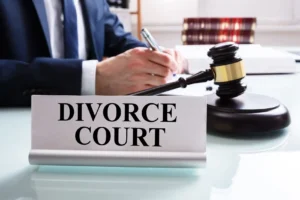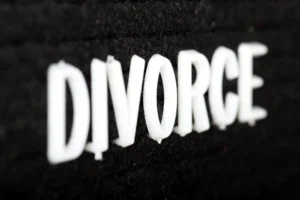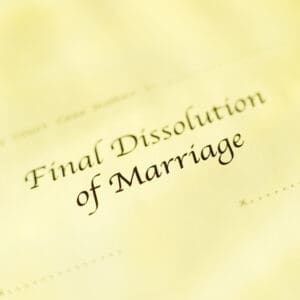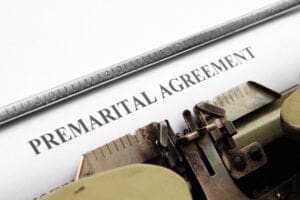Premises Liability: Your Rights as a Visitor or Customer
The legal concept of premises liability forms a critical component of personal injury law, establishing the responsibilities of property owners and occupiers towards individuals who enter their premises. This area of law addresses the rights of visitors and customers when they suffer injuries due to unsafe conditions on someone else’s property. Understanding the nuances of premises liability is essential for both property owners seeking to mitigate risks and individuals who may find themselves victims of negligence.
At its core, premises liability law revolves around the duty of care owed by property owners to those who enter their property. This duty varies depending on the legal status of the visitor, which typically falls into one of three categories: invitees, licensees, and trespassers. Each category carries different levels of responsibility for the property owner, reflecting the nature of the visitor’s presence on the property.
Invitees, who enter a property for the mutual benefit of themselves and the property owner, are afforded the highest level of protection under premises liability law. This category primarily includes customers in commercial establishments, such as shoppers in a retail store or diners in a restaurant. Property owners owe invitees a duty to maintain their premises in a reasonably safe condition, to inspect for potential hazards regularly, and to either remedy dangerous conditions or provide adequate warnings about them.
The second category, licensees, encompasses individuals who enter a property with the owner’s permission but for their own purposes, such as social guests at a private residence. While property owners still owe a duty of care to licensees, it is generally less stringent than that owed to invitees. Owners must warn licensees of known dangers that are not readily apparent but are not typically required to inspect for or fix hazardous conditions.
Trespassers, individuals who enter a property without permission, are afforded the least protection under premises liability law. Generally, property owners owe trespassers only a duty to refrain from willful or wanton conduct that might cause injury. However, there are exceptions to this rule, particularly when it comes to child trespassers under the attractive nuisance doctrine.
The attractive nuisance doctrine recognizes that children may not fully appreciate the dangers of certain property features that might attract them, such as swimming pools, trampolines, or abandoned vehicles. In these cases, property owners may be held liable for injuries to child trespassers if they fail to take reasonable precautions to prevent access to these potentially dangerous attractions.
To establish a valid premises liability claim, an injured party must typically demonstrate several key elements. First, they must show that the property owner owed them a duty of care based on their status as an invitee, licensee, or, in some cases, a trespasser. Second, they must prove that the property owner breached this duty by failing to maintain safe premises or warn of known hazards. Third, the injured party must establish that this breach of duty directly caused their injuries. Finally, they must demonstrate that they suffered actual damages as a result of the incident.
One of the most common types of premises liability cases involves slip and fall accidents. These incidents can occur due to a variety of hazardous conditions, such as wet floors, uneven surfaces, poor lighting, or obstacles in walkways. Property owners, particularly those operating businesses open to the public, have a responsibility to address these potential hazards promptly. This may involve regular inspections, maintenance procedures, and the use of warning signs to alert visitors to temporary dangers.
Another significant area of premises liability concerns inadequate security leading to criminal acts against visitors or customers. This is particularly relevant for businesses operating in high-crime areas or those that, by their nature, may attract criminal activity. Property owners may be held liable if they fail to implement reasonable security measures, such as proper lighting, security cameras, or on-site personnel, to protect their patrons from foreseeable criminal acts.
The concept of foreseeability plays a crucial role in premises liability cases. Property owners are generally not held responsible for injuries resulting from entirely unforeseeable events or conditions. However, if a reasonable person in the owner’s position should have anticipated the danger and taken steps to prevent it, the owner may be found negligent. This standard encourages property owners to be proactive in identifying and addressing potential hazards on their premises.
In recent years, the scope of premises liability has expanded to encompass new areas of concern. For instance, the rise of e-commerce and home delivery services has raised questions about the liability of property owners for injuries to delivery personnel. Similarly, the growing popularity of short-term rentals through platforms like Airbnb has introduced complexities regarding the responsibilities of both property owners and temporary occupants.
The COVID-19 pandemic has also brought new dimensions to premises liability law. Property owners, particularly those operating businesses, have faced increased scrutiny regarding their efforts to prevent the spread of infectious diseases. This has led to discussions about the extent to which property owners can be held liable for virus transmission on their premises and what constitutes reasonable precautions in such circumstances.
Another emerging trend in premises liability law concerns the use of artificial intelligence and automated systems in property management. As businesses increasingly rely on technology for security, maintenance, and customer service, questions arise about liability when these systems fail or contribute to injuries. For example, if an AI-controlled security system fails to detect and respond to a dangerous situation, determining liability may involve complex considerations of system design, implementation, and human oversight.
The intersection of premises liability with data privacy and cybersecurity is also gaining attention. As businesses collect and store more customer data, they may face liability not only for physical injuries on their premises but also for data breaches that occur due to inadequate security measures. This expansion of premises liability into the digital realm reflects the evolving nature of property and the risks associated with it in the modern era.
For property owners, understanding and mitigating premises liability risks is crucial. This often involves implementing comprehensive risk management strategies, including regular property inspections, prompt maintenance and repair procedures, and thorough documentation of all safety-related activities. Many property owners also rely on liability insurance to protect themselves financially in the event of a successful claim against them.
From the perspective of visitors and customers, awareness of their rights under premises liability law is essential for protecting their interests. Individuals who suffer injuries on someone else’s property should be aware of the steps to take immediately following an incident, such as reporting the injury to the property owner or manager, seeking medical attention, and documenting the conditions that led to the injury. Prompt action can be crucial in preserving evidence and establishing the validity of a potential claim.
It’s important to note that premises liability laws can vary significantly from one jurisdiction to another. Some states maintain a clear distinction between the duties owed to invitees, licensees, and trespassers, while others have adopted a unified standard of care that applies regardless of the visitor’s status. Additionally, many jurisdictions have enacted specific statutes that address particular aspects of premises liability, such as snow and ice removal requirements or limitations on liability for recreational activities.
The concept of comparative negligence also plays a significant role in many premises liability cases. This principle recognizes that injured parties may sometimes bear some responsibility for their own injuries. For example, if a customer in a store ignores clearly posted warning signs and enters a restricted area, they may be found partially at fault for any resulting injuries. In jurisdictions that apply comparative negligence, the injured party’s compensation may be reduced in proportion to their degree of fault.
Another important aspect of premises liability law is the distinction between conditions and activities on the property. While property owners are generally responsible for maintaining safe conditions, they may also be liable for injuries resulting from dangerous activities conducted on their premises. This can include everything from construction work to special events that introduce new risks to visitors.
The statute of limitations for premises liability claims is another critical consideration for injured parties. These time limits, which vary by jurisdiction, establish the period within which a lawsuit must be filed following an injury. Failing to initiate legal action within the prescribed timeframe can result in the loss of the right to seek compensation, regardless of the merits of the case.
For businesses operating across multiple locations or jurisdictions, maintaining consistent safety standards while adapting to local legal requirements can be challenging. This often necessitates the development of comprehensive policies and procedures that account for variations in premises liability laws and ensure compliance with the highest applicable standards.
The role of expert witnesses in premises liability cases cannot be overstated. These professionals, who may include safety engineers, architects, or medical experts, often play a crucial role in establishing the standard of care, identifying breaches of that standard, and demonstrating the causal link between unsafe conditions and the plaintiff’s injuries. Their testimony can be particularly important in cases involving complex technical issues or disputed facts.
As society becomes increasingly litigious, many property owners have turned to waivers and liability releases as a means of protecting themselves from premises liability claims. While these documents can provide some protection, their effectiveness is often limited by legal restrictions and judicial scrutiny. Courts may invalidate waivers that are overly broad, unclear, or contrary to public policy, particularly in cases involving gross negligence or intentional misconduct.
The concept of constructive notice is another important element in many premises liability cases. This legal principle holds that property owners may be liable for hazardous conditions they should have known about through reasonable inspection and maintenance practices, even if they did not have actual knowledge of the specific danger. This underscores the importance of regular, documented inspections and prompt response to potential hazards.
In the context of commercial properties, the issue of control over the premises can significantly impact liability. In situations where a property is leased, determining whether the landlord or tenant is responsible for maintaining safe conditions can be complex. Lease agreements often play a crucial role in allocating these responsibilities, but courts may also consider factors such as the nature of the hazard and the parties’ practical ability to address it.
The growing trend towards mixed-use developments, which combine residential, commercial, and sometimes industrial spaces within a single property, has introduced new complexities to premises liability law. These developments often involve multiple property owners, tenants, and management entities, making it challenging to determine responsibility for injuries that occur in common areas or at the intersection of different use zones.
As environmental concerns become more prominent, premises liability law has expanded to encompass issues related to toxic exposure and environmental hazards. Property owners may face liability for injuries or illnesses resulting from exposure to substances such as asbestos, lead paint, or contaminated groundwater. This area of law often involves complex scientific evidence and long-term health effects, making it particularly challenging for both plaintiffs and defendants.
The rise of the sharing economy has introduced new questions regarding premises liability in the context of short-term rentals and shared spaces. Platforms like Airbnb and WeWork have blurred the lines between traditional property ownership and temporary occupancy, raising questions about who bears responsibility for injuries that occur in these settings. This has led to ongoing legal debates and policy discussions about how to adapt premises liability principles to these new business models.
In conclusion, premises liability law serves as a crucial mechanism for ensuring that property owners maintain safe environments for visitors and customers. By establishing clear standards of care and providing legal recourse for those injured due to negligence, this area of law plays a vital role in promoting public safety and holding property owners accountable for their responsibilities. As society continues to evolve, premises liability law will undoubtedly adapt to address new challenges and protect the rights of individuals in an ever-changing landscape of property use and ownership.
Website citations:
- https://www.justia.com/injury/premises-liability/
- https://www.findlaw.com/injury/accident-injury-law/premises-liability-who-is-responsible.html
- https://www.legalmatch.com/law-library/article/premises-liability-lawyers.html
- https://www.hg.org/premises-liability.html


